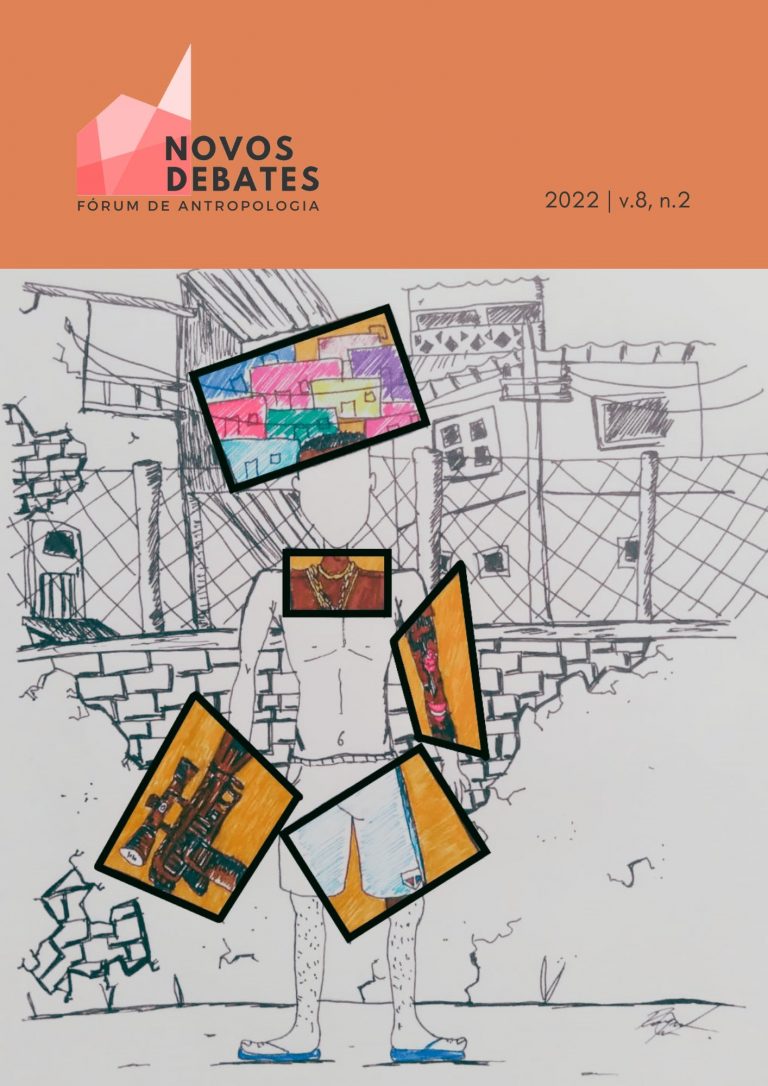I Imagine Them Like This...
Structural violence in the periphery of Fortaleza-CE
DOI:
https://doi.org/10.48006/2358-0097/V8N2.E8211Keywords:
visual anthropology, slam, occupation, racism, graphic journalAbstract
This paper walks through discourses interpreted in drawings in this researcher's graphic diary during field trips and moments of observation. Just as Karina Kuschnir (2019) points out, anthropological research contributes to drawing the world around us. It is on the importance of this tool, drawing, that the discourses of the residents of the periphery and the populations that live around it, gain strokes, colors, and geometric shapes. This is a study of how the Brazilian favelas, specifically the Carlos Marighella Occupation in Fortaleza, Ceará, are drawn in the Ceará imaginary about the "other" (distant or not physically), by discourses that sometimes victimize and sometimes marginalize their bodies and territories. The drawings and the text discuss with authors of urban anthropology, such as Alba Zaluar (1985; 2004) and with sociologist Gabriel Feltran (2011), but go through the Orientalism of Edward Said (1990) and the necropolitics of Achille Mbembe (2018), to problematize the legitimate and the illegitimate in the structure of racism and urban violence in certain circumstances. As well as programs that purport to "save" their residents from misery and distorted images in media of increasingly dangerous favelas. In doing so, they justify violence against this population. The drawings are in the order of the observed statements. They are mostly in black and white, made with Nankin Drawing pen #00.5. To give evidence to the speeches collected, they are the only ones that appear in color within geometric shapes, because this way, the meaning of "drawing/painting" would be more evident.
References
ALMEIDA, Silvio. Racismo Estrutural. Coleção Feminismos Plurais, coordenada por Djamila Ribeiro. Editora: Jandaíra, São Paulo, 2019.
AZEVEDO, Aina. 2016. “Desenho e Antropologia: recuperação histórica e momento atual”. Cadernos de Arte e Antropologia, 5(2): 15-32. DOI: https://doi.org/10.4000/cadernosaa.1096
CAUSY, Andrew. 2017. Drawn to See: Drawing as an Ethnographic Method. Toronto: University of Toronto Press.
CIDADE DE DEUS. 2002. Direção: Fernando Meirelles. Produção: Globo filmes. Local: distribuidora Lumière Brasil.
FELTRAN, Gabriel de Santis. 2011. Fronteiras de tensão: Política e violência nas periferias de São Paulo. São Paulo: Unesp: CEM: Ceprap.
KUSCHNIR, Karina. 2014. “Ensinando Antropólogos A Desenhar: uma experiência didática e de pesquisa”. Cadernos de Arte e Antropologia, 3(2):23-46. DOI: https://doi.org/10.4000/cadernosaa.506
KUSCHNIR, Karina. 2016. A Antropologia Pelo Desenho: experiências visuais e etnográficas. Cadernos de Arte e Antropologia. 5(2):5-15. DOI: https://doi.org/10.4000/cadernosaa.1095
KUSCHNIR, Karina. 2019. Desenho Gráfico: Onze benefícios de usar um diário gráfico no trabalho de campo. Pensata: Revista Dos Alunos Do Programa De Pós-Graduação Em Ciências Sociais Da UNIFESP, 7(1). https://doi.org/10.34024/pensata.2018.v7.10120. DOI: https://doi.org/10.34024/pensata.2018.v7.10120
MBEMBE, Achille. 2018. Necropolítica: biopoder, soberania, estado de exceção, política da morte. Tradução de Renata Santini. São Paulo: N-1 Edições.
SAID, Edward. 1990. Oriente como invenção do Ocidente. São Paulo: Companhia das Letras.
TEIXEIRA, R. S. 2020. Para além das palavras: fotografar e desenhar como possibilidade para o fazer antropológico. In: 32ª Reunião Brasileira de Antropologia, 2020, Rio de Janeiro. Anais da 32ª Reunião Brasileira de Antropologia, p. 1-13.
TEIXEIRA, Ramon da Silva. 2020. “Para além das palavras: fotografar e desenhar como possibilidade para o fazer antropológico”. Trabalho apresentado na 32ª Reunião Brasileira de Antropologia.
ZALUAR, Alba. 19852000. A máquina e a revolta: as organizações populares e o significado da pobreza.São Paulo, Brasiliense.
ZALUAR, Alba. 2014. Integração perversa: pobre e tráfico de drogas. Rio de Janeiro: Editora FGV.
Downloads
Published
How to Cite
Issue
Section
License
Copyright (c) 2024 Novos Debates

This work is licensed under a Creative Commons Attribution 3.0 Unported License.
Open Access Statement
Novos Debates is an open access journal. We do not charge any fee for the publication of articles or for access to our issues. All our content, unless otherwise indicated, is licensed under Creative Commons Brazil Attribution 3.0 (CC BY 3.0 BR).
You are free to:
– Share — copy and redistribute the material in any medium or format
– Adapt — remix, transform, and build upon the material for any purpose, even commercially
– The licensor cannot revoke these freedoms as long as you follow the license terms.
Under the following terms:
– Attribution — You must give appropriate credit, provide a link to the license, and indicate if changes were made. You may do so in any reasonable manner, but not in any way that suggests the licensor endorses you or your use.
– No additional restrictions — You may not apply legal terms or technological measures that legally restrict others from doing anything the license permits.


